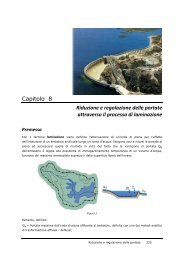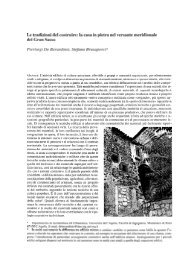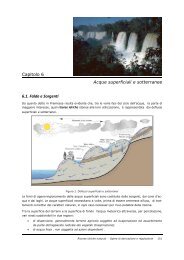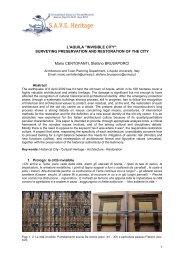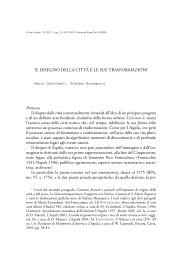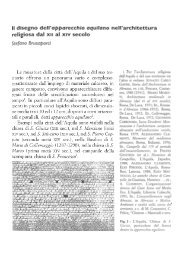Frammentazione ambientale, connettività, reti ecologiche
Frammentazione ambientale, connettività, reti ecologiche
Frammentazione ambientale, connettività, reti ecologiche
Create successful ePaper yourself
Turn your PDF publications into a flip-book with our unique Google optimized e-Paper software.
164 Connettività<br />
Abstract<br />
Protected areas: Role, design and limitations - As a general rule, protected<br />
areas can preserve the biological diversity of a region only if they comprise a relatively<br />
complete sample of native ecosystems and are large and close to each other.<br />
Indeed, the local extinction of a species may happen more rapidly in small, isolated<br />
reserves. Therefore, although protected areas can constitute the starting focal point<br />
for specific conservation strategies, they do not seem to be sufficient to preserve<br />
populations, communities, and ecological processes in fragmented landscapes,<br />
especially in Europe.<br />
With respect to the last issue, a debate is in progress on natural reserve design,<br />
regarding their location, shape, size, and more appropriate number (SLOSS debate).<br />
Reserves should have a regular shape in order to maximize the core area and<br />
the ratio area/perimeter, so decreasing the edge effect on sensitive species and keeping<br />
some key ecological processes, such as dispersal. Moreover, for a correct design,<br />
the study of the geographic pattern of the sensitive (meta)populations and of<br />
the species-specific requirements may be relevant.<br />
Corridors and connectivity. Role and limitations – In order to minimize the impact<br />
of habitat fragmentation on diversity and ecological processes, the role of corridors<br />
and connectivity has often been emphasized. However, their utility is not<br />
clear due to a lack of experimental success.<br />
The potential advantages may include the increase of movements among fragments<br />
for sensitive species, allowing a gene flow among populations, providing additional<br />
habitats and refuge areas, increasing immigration and recolonization and<br />
decreasing the extinction rates.<br />
Disadvantages are the risk of catastrophes spreading in fragments. Moreover,<br />
sensitive species may perceive corridors of higher perimeter/area ratio as edge/sink<br />
habitat, may compete with generalists or be preyed on during dispersal.<br />
Species-specificity and design – Corridors may have a role as habitat and routes<br />
of dispersal and appear to be species-specific, with intraspecific differences. They<br />
may be classified on the basis of their origin, structure, topographic position, and<br />
shape and their design should take into account those factors which affect the spe-



